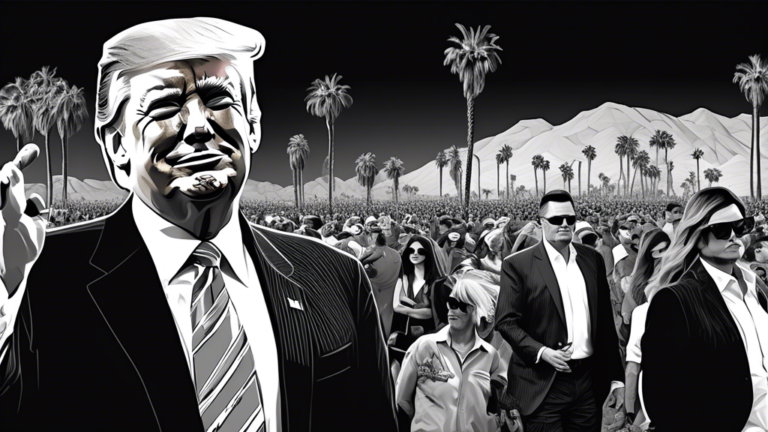

Rally at Calhoun Ranch: A Bold Move in California
On October 12, 2024, Donald Trump held a campaign rally at Calhoun Ranch in Coachella, California. Known for its strong Democratic leanings, California might seem an unlikely stop for Trump’s campaign. However, the event was not just a political rally; it was a strategic maneuver aimed at demonstrating Trump’s appeal, even in states considered to be Democratic strongholds. The event began with doors opening at noon and the rally officially starting at 5:00 PM PT, drawing significant attention and large crowds.
Driving Media Coverage and Crowd Enthusiasm
Trump’s campaign has long relied on large rallies to create a wave of media coverage, portraying a narrative of extensive public support. The Coachella rally was no exception. By generating media buzz and showcasing enthusiastic turnout, Trump aims to bolster his campaign’s narrative of momentum and widespread appeal. This strategy is crucial for maintaining high visibility and energizing his base as the election approaches.
Fundraising and Volunteer Efforts
The visit to Coachella also served a dual purpose: not only was it a rally for supporters, but it also acted as an opportunity for fundraising and mobilizing volunteers. By engaging with residents of rural areas known to lean conservative, Trump’s campaign seeks to strengthen grassroots efforts, essential for phone banking and canvassing in battleground states where the race is tighter.
Critique of Democratic Governance
At the rally, Trump did not shy away from critiquing Democratic governance. He specifically addressed issues such as crime, border security, and took the opportunity to criticize the leadership of high-profile Democratic figures, including California Governor Gavin Newsom. This approach aims to resonate with voters who may be disillusioned with current state leadership while simultaneously stirring the political landscape.
Connecting with Diverse Demographics
Beyond geographic outreach, Trump is targeting specific voter demographics. His rallies in blue states like Illinois and New York focus on reaching non-White male voters, a demographic that traditionally leans Democratic. By addressing topics and concerns pertinent to these groups, Trump’s campaign strategically tries to sway voters who might be on the fence and broaden his electoral base.
Local Resistance and Controversy
However, Trump’s presence in Coachella was not without controversy. Local officials and community members expressed discontent, highlighting his previous remarks on sensitive issues involving immigrants, women, and the LGBTQ community. These remarks, they argue, do not align with the values of the diverse and progressive community of Coachella, sparking significant pushback.
A Broader Election Strategy
Trump’s approach in the campaign’s final stages is marked by a high-stakes strategy, characterized by high-profile rallies in typically blue states. Rather than confining efforts to traditional swing states, he aims to signal strength and broad support, a tactic also intended to energize Republican voters in down-ballot races. Additionally, these rallies are strategic assets laying a foundation for potential challenges to the election results, should his campaign contest any unfriendly outcomes, by asserting his support base is too vast to logically lose.